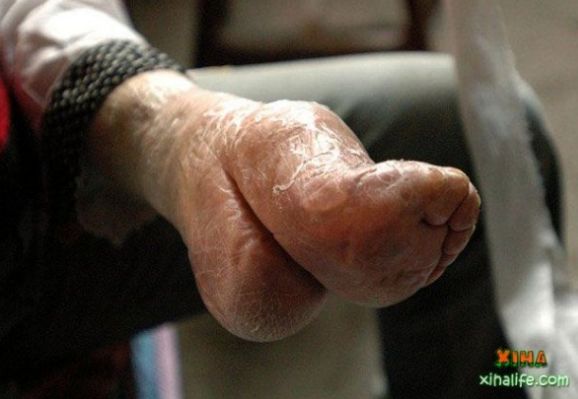Torturous Footbinding In China
Tiny, ‘lotus flower’ feet were a symbol of status, beauty and submission to men. Little girls had her feet broken and bandaged over and over, until they reached a desired shape and size. In this long and painful process skin would roughen and decay as they were kept away from air or bath.
“I regret binding my feet,” Zhou says. “I can’t dance, I can’t move properly. I regret it a lot. But at the time, if you didn’t bind your feet, no one would marry you.”
Liuyicun resident Wang Lifen, 79, describes her own attitude as a child, saying, “I didn’t want to bind my feet, but the whole village told me that I had to. So I did.”
And 86-year-old Zhou Guizhen says, “At that time everybody had bound feet. If you didn’t, you’d only be able to marry a tribesman from an ethnic minority.”
Legend has it that the origins of footbinding go back as far as the Shang dynasty (1700-1027 B.C.). The Shang Empress had a clubfoot, so she demanded that footbinding be made compulsory in the court.
During subsequent dynasties, footbinding became more popular and spread from court circles to the wealthy. Eventually, it moved from the cities to the countryside, where young girls realized that binding their feet could be their passport to social mobility and increased wealth.
Imagine a girl that can’t run, dance or even walk properly. She is in pain all the time and her feet smell of decay. Is it sexy? Certainly the “three-inch golden lotuses” were seen as the ultimate erogenous zone, with Qing dynasty pornographic books listing 48 different ways of playing with women’s bound feet.
Still, it’s hard to imagine that’s what Chinese men wanted to see in their wives. Apparently, culture and fashion was way more important than well-being and health of women.
Footbinding has been delegalized in 1912.









